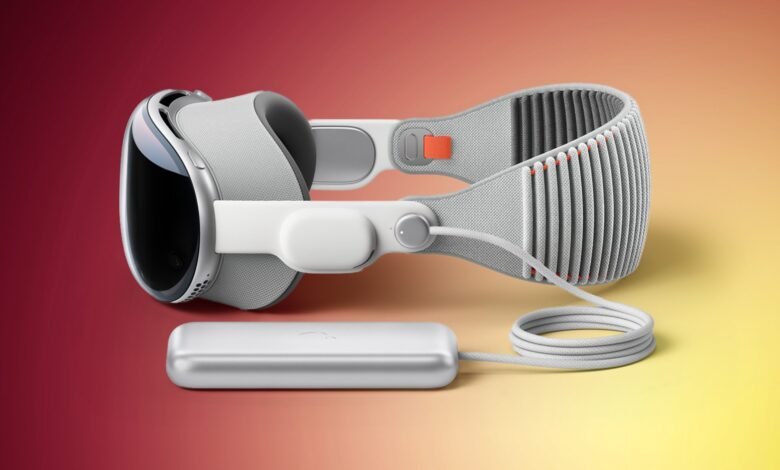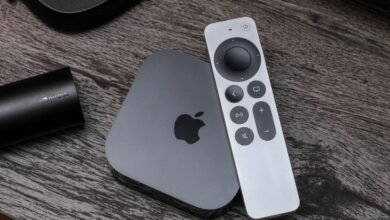Apple’s Vision Pro Headset Development Reportedly Paused

▼ Summary
– Apple has reportedly paused development of both the redesigned Vision Pro 2 and the lower-cost Vision Air headset, with no new headsets currently in active development.
– The company is shifting its focus from mixed-reality headsets to developing smart glasses to better compete with rivals like Meta.
– Apple plans to release an M5 chip refresh of the existing Vision Pro headset to utilize leftover components and support the product line temporarily.
– The original Vision Pro faced challenges including high cost, bulkiness, discomfort, and limited use cases, which narrowed its appeal and led to weak demand.
– While Apple remains committed to spatial computing, its future product strategy is uncertain, with smart glasses expected as soon as next year and headset development potentially resuming later.
Rumors indicate a significant shift in Apple’s product development strategy, with the company reportedly halting work on redesigned versions of its Vision Pro headset. Apple’s focus has apparently pivoted entirely toward developing smart glasses, marking a dramatic change from the spatial computing vision the company unveiled just last year. This strategic redirection comes amid cooling consumer enthusiasm for high-end mixed reality devices and challenges in creating more affordable alternatives.
When Apple first introduced the Vision Pro in 2023, executives positioned the device as the beginning of an entirely new computing era. Priced at $3,499, the sophisticated headset targeted early adopters willing to invest in premium technology. Despite initial excitement surrounding its advanced displays and innovative operating system, market reception proved more tepid than Apple had anticipated. Industry observers note that even by the company’s conservative standards, interest diminished faster than projected.
Originally, Apple’s roadmap included developing two distinct product tiers. The company planned to follow the Vision Pro with a more accessible model called “Vision Air,” designed to be approximately 40% lighter and 50% cheaper than the premium version. This budget-friendly alternative would have utilized less expensive display technology and simplified optical systems while improving overall comfort. Simultaneously, Apple engineers were reportedly working on a second-generation Vision Pro with enhanced displays, extended battery performance, and a more competitive price point.
By mid-2024, evidence suggested Apple was reconsidering its entire mixed reality strategy. Reports indicated the company had suspended development of the Vision Pro 2, redirecting engineering talent toward accelerating the cheaper Vision Air model. Internal assessments apparently concluded that the original headset’s combination of high cost, physical discomfort, and limited practical applications had restricted its appeal even among technology enthusiasts. Development challenges further complicated matters, as engineers struggled to reduce manufacturing expenses without compromising essential features.
Recent developments suggest an even more fundamental restructuring of Apple’s augmented reality division. According to new reports, work on the affordable Vision Air has also been paused as the company concentrates resources on smart glasses development. This decision leaves Apple without any headset-class hardware in active development, though the company maintains its commitment to spatial computing through software updates and component refreshes.
Apple appears to be preparing an updated version of the existing Vision Pro featuring the upcoming M5 processor chip and potentially a second-generation R-series coprocessor. This refresh would utilize remaining component inventory while providing a modest performance improvement for current users. Regulatory filings have already hinted at this interim update, which could launch within weeks.
The M5-equipped Vision Pro will likely serve as a placeholder product while Apple pursues its smart glasses initiative. Though this updated model may attract some new customers, it’s not expected to significantly expand the device’s market penetration. Industry analysts speculate that Apple might resume headset development once its glasses product establishes a market presence, potentially around 2027 or 2028.
For now, continued visionOS updates and the impending hardware refresh demonstrate Apple’s ongoing investment in mixed reality technology. However, the company’s sudden strategic pivot toward smart glasses and artificial intelligence initiatives leaves the long-term future of its headset product line uncertain.
(Source: Mac Rumors)





